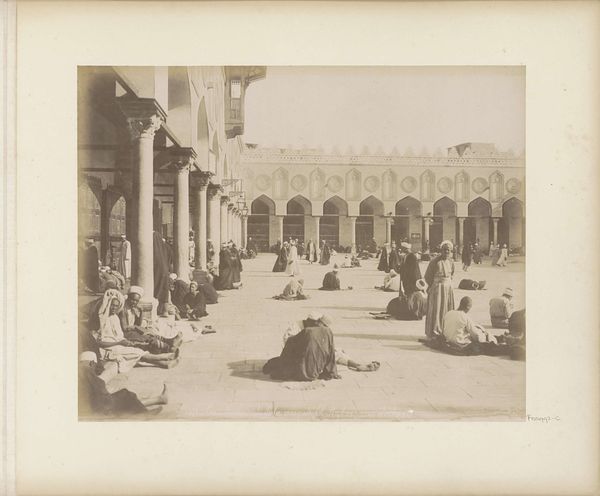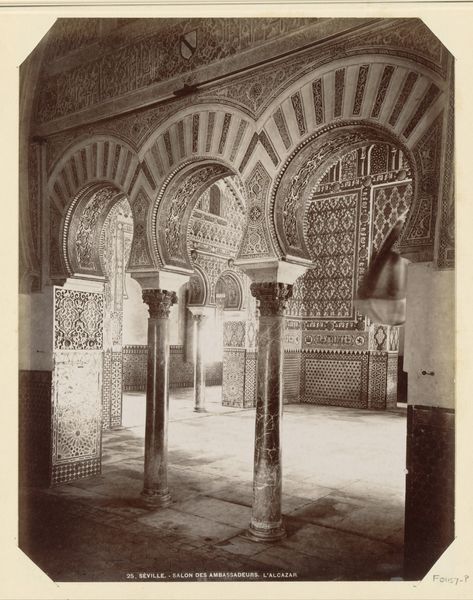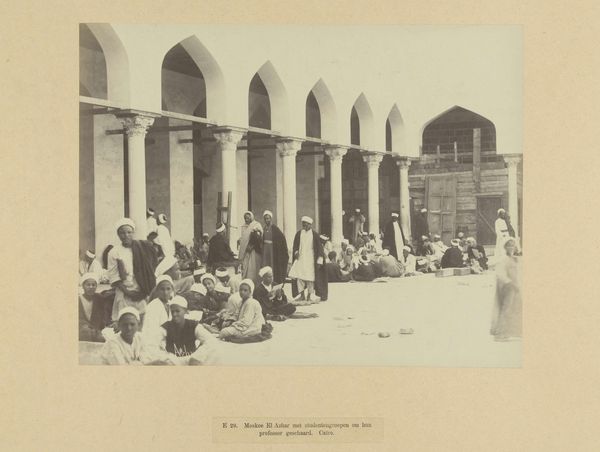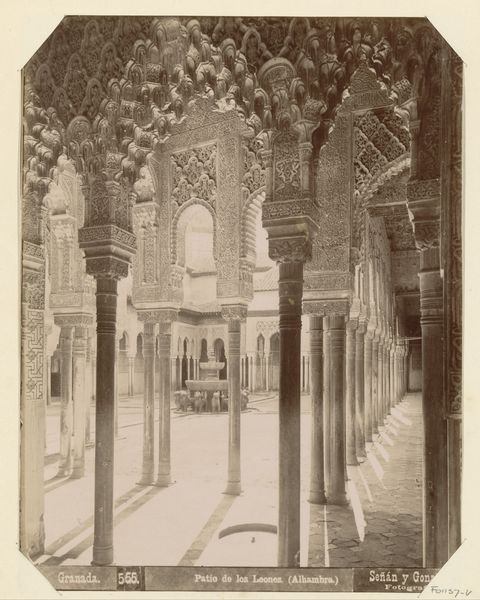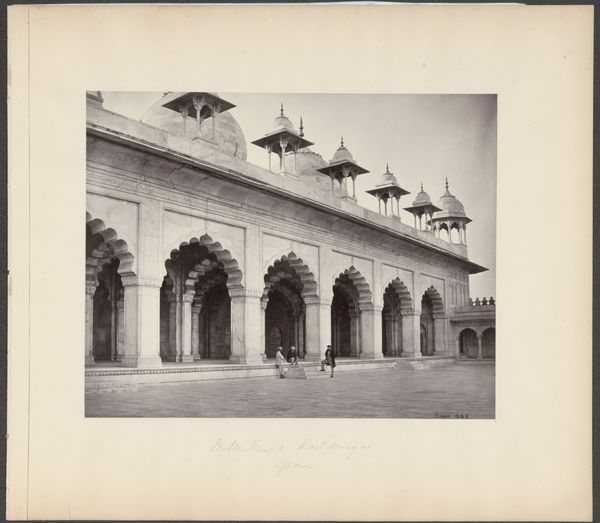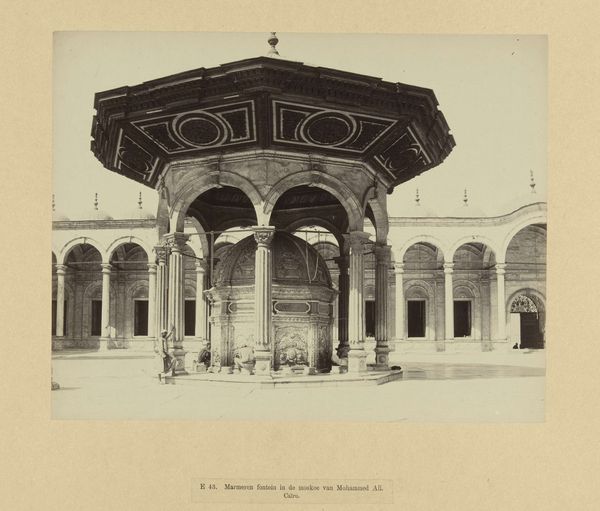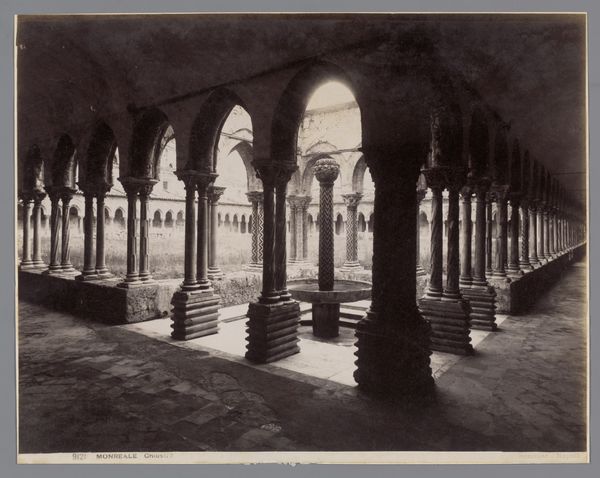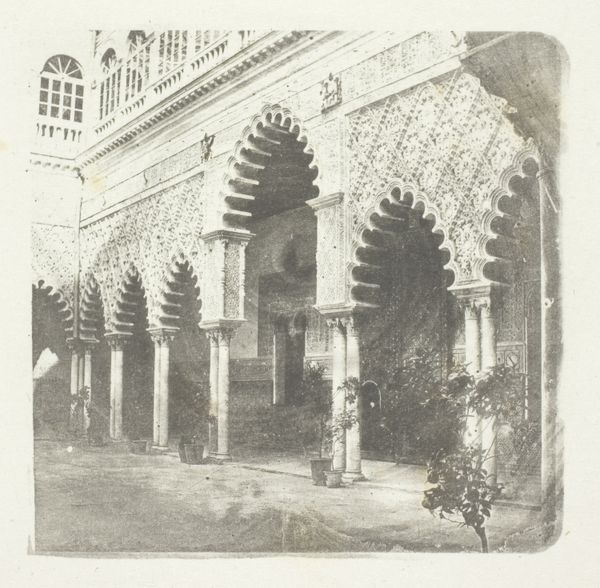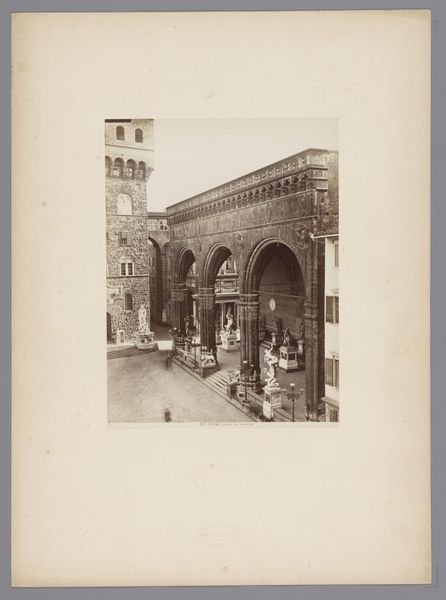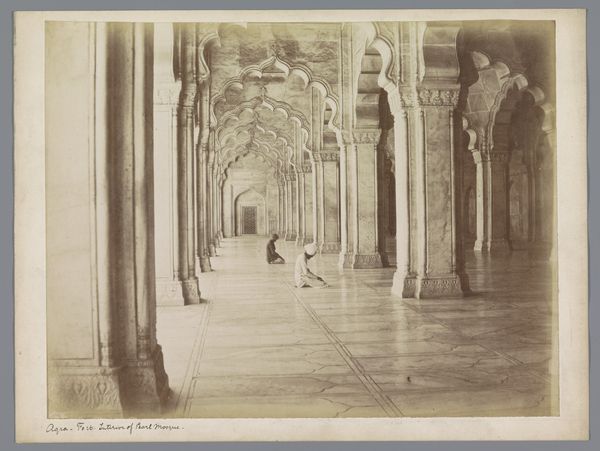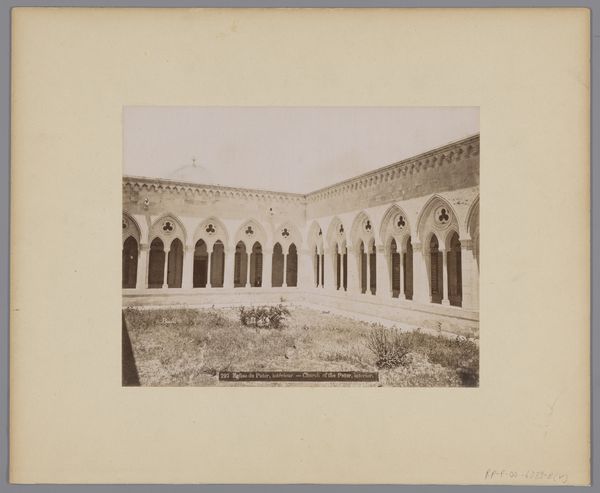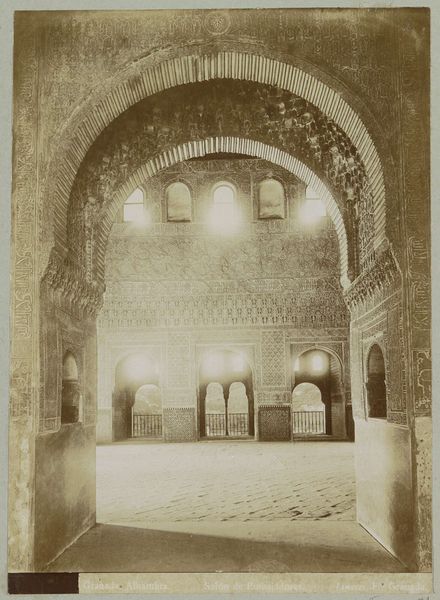
photography, gelatin-silver-print, architecture
#
historical design
#
aged paper
#
vintage
#
landscape
#
archive photography
#
photography
#
historical photography
#
orientalism
#
gelatin-silver-print
#
19th century
#
islamic-art
#
architecture
Dimensions: height 279 mm, width 218 mm, height 558 mm, width 469 mm
Copyright: Rijks Museum: Open Domain
Félix Bonfils captured this photograph of the Great Mosque of Damascus, likely in the 1870s, using the collodion process. Note the rhythmic repetition of the columns and arches. In Islamic architecture, this repetition isn't merely decorative; it echoes the infinite and all-encompassing nature of the divine. Each pillar, each arch, is a module in a pattern that extends beyond our sight, much like the concept of eternity. Consider how similar colonnades appear in ancient Greek temples, as well as Roman basilicas. Over time, such structural forms have been adapted and reinterpreted across cultures. The colonnade conveys not just structural support, but also a sense of order, stability, and spiritual aspiration. The arrangement subtly influences our perception, creating a feeling of serenity and reverence, echoing the sacred purpose of the space. The power of such archetypal forms taps into collective memory, resonating with our deepest senses of order and the sublime.
Comments
No comments
Be the first to comment and join the conversation on the ultimate creative platform.
